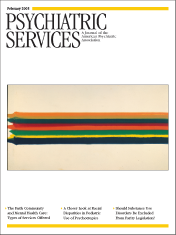The Anatomy of Hope
Jerome Groopman, M.D., is a well-known hematologist-oncologist who publishes frequently in The New Yorker. Those who read his articles first when they get their issue of the magazine will certainly rush to read The Anatomy of Hope. They will be richly rewarded for their haste.
Groopman struggles to define hope with examples set by various patients, from those most devoid of hope to those buoyed by hope in the face of what often is terminal illness. A definition of hope seems obvious; yet as the author marches through the stories of his patients and his own development as a physician treating those who often die of their disease, he increasingly refines and clarifies his meaning. Although "spirituality" is a hot topic in medicine today, Groopman strives to define what hope might mean for people who do not believe in an immortal soul, life after death, or God. He does tie hope to a sense of spirituality, but several of his patients are deeply religious members of traditional religions, and he shows how rigid adherence to religious views can deprive as much as nourish hope. The stories are devastatingly poignant; read this book with a box of tissues at your side.
The author is present in the book from three vantage points. He writes in the very personal first person and recounts his patients' histories and their impact on him. He also presents the history of his development into a doctor struggling to learn how to inform fully while preserving—and even giving—hope at the same time. Finally, he shares his own medical history of chronic pain and how a doctor was able to restore the hope that was necessary for his recovery.
At the conclusion of the book is a section on the biology of hope, which psychiatrists in particular should find fascinating. This section addresses the effect of physical discomfort in illness, which causes depression in a way that seems obvious and yet is not.
This book provides descriptions of cancer patients. Psychiatrists and others who treat patients with chronic mental illness will readily substitute people with a diagnosis of schizophrenia who strive mightily to find meaning and hope in a life now radically changed, and in many ways diminished. The author provides a template for how we can talk with patients and their families in a way that both informs truthfully and provides a framework for hope and growth.
So what is hope? For Groopman, it is some combination of resilience, faith (not necessarily religious faith), and a sense of control. Although he does not make this explicit, for him it seems that to hope requires imagination of a future that continues, whether this be in the world as it is or in some other, imagined way.
One topic not mentioned in the book is that of meaning. It seems to me that hope can survive only when life as it is or might be has meaning. Even from Auschwitz, Dr. Viktor Frankel could find meaning (1). Groopman, himself the child of Holocaust survivors, works to preserve hope for his patients and himself. What he often means when he describes restoring hope, or helping a patient be hopeful, is understanding the meaning they ascribe to their lives.
This is a beautiful book for every reader. Students and trainees will find much to teach them about communicating with their patients; doctors will doubtless feel that there is more they can do to provide comfort and hope. Psychiatrists will see in it a means to helping patients bear unbearable affect, as well as their own.
Dr. Tabor is medical director of adult inpatient psychiatry at Kings County Hospital Center and assistant professor in psychiatry at the State University of New York Downstate Medical Center in Brooklyn, New York.
1. Frankel V: Man's Search for Meaning. New York, Washington Square Press, 1977Google Scholar



